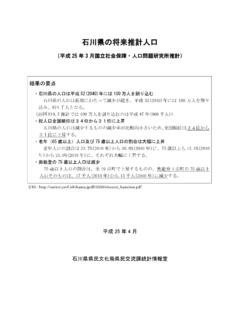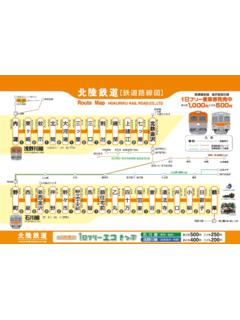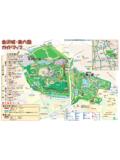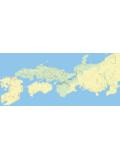Transcription of Guidance Notes: Ishikawa Diagrams
1 Guidance Notes: Ishikawa Diagrams Doc 6K/1 Page 1 of 4 Introduction Ishikawa Diagrams (also called fishbone Diagrams or cause-and-effect Diagrams ) are Diagrams that show the causes of a certain event or problem. A common use of the Ishikawa diagram is in product design, to identify potential factors causing an overall effect and to help identify the root cause of non-conformances. Ishikawa Diagrams were proposed by Kaoru Ishikawa in the 1960s, who pioneered quality management processes in the Kawasaki shipyards, and in the process became one of the founding fathers of modern management. It was first used in the 1960s, and is considered one of the seven basic tools of quality management, along with the histogram, Pareto chart, check sheet, control chart, flowchart, and scatter diagram.
2 See Quality Management Glossary. It is known as a fishbone diagram because of its shape, similar to the side view of a fish skeleton. Causes Causes in the diagram are often based on a certain set of causes, such as the 6 M's, described below. Cause-and-effect Diagrams can reveal key relationships among various variables, and the possible causes provide additional insight into process behavior. Causes in a typical diagram are normally grouped into categories, the main ones of which are: The 6 Ms: Men/people, machines, methods, materials, measures, mother nature 4 Ps Places, Procedures, People, Politics 4 Ss Surroundings, Suppliers, Systems, Skills Causes should be derived from brainstorming sessions.
3 Then causes should be sorted through affinity-grouping to collect similar ideas together. These groups should then be labeled as categories of the fishbone. They will typically be one of the traditional categories mentioned above but may be something unique to our application of this tool. Causes should be specific, measurable, and controllable. Guidance Notes: Ishikawa Diagrams Doc 6K/1 Page 2 of 4 Appearance A generic Ishikawa diagram showing general (red) and more refined (blue) causes for an event. Most Ishikawa Diagrams have a box at the right hand side, where the effect to be examined is written. The main body of the diagram is a horizontal line from which stem the general causes, represented as "bones".
4 These are drawn towards the left-hand side of the paper and are each labeled with the causes to be investigated often brainstormed beforehand and based on the major causes listed above. Off each of the large bones there may be smaller bones highlighting more specific aspects of a certain cause, and sometimes there may be a third level of bones or more. These can be found using the '5 Whys' technique. When the most probable causes have been identified, they are written in the box along with the original effect. The more populated bones generally outline more influential factors, with the opposite applying to bones with fewer "branches". Further analysis of the diagram can be achieved with a Pareto chart.
5 The Ishikawa concept can also be documented and analyzed through depiction in a matrix format Identifying the Likely Causes of Problems Cause and Effect Diagrams help you to think through causes of a problem thoroughly. Their major benefit is that they push you to consider all possible causes of the problem, rather than just the ones that are most obvious. Guidance Notes: Ishikawa Diagrams Doc 6K/1 Page 3 of 4 The approach combines brainstorming with use of a type of concept map. How to Use the Tool: Follow these steps to solve a problem with a Cause and Effect Diagram: 1. Identify the problem: Write down the exact problem you face in detail. Where appropriate identify who is involved, what the problem is, and when and where it occurs.
6 Write the problem in a box on the left hand side of a large sheet of paper. Draw a line across the paper horizontally from the box. This arrangement, looking like the head and spine of a fish, gives you space to develop ideas. 2. Work out the major factors involved: Next identify the factors that may contribute to the problem. Draw lines off the spine for each factor, and label it. These may be people involved with the problem, systems, equipment, materials, external forces, etc. Try to draw out as many possible factors as possible. If you are trying to solve the problem as part of a group, then this may be a good time for some brainstorming. 3. Identify possible causes: For each of the factors you considered in stage 2, brainstorm possible causes of the problem that may be related to the factor.
7 Show these as smaller lines Guidance Notes: Ishikawa Diagrams Doc 6K/1 Page 4 of 4 coming off the 'bones' of the fish. Where a cause is large or complex, then it may be best to break the it down into sub-causes. Show these as lines coming off each cause line. 4. Analyze your diagram: By this stage you should have a diagram showing all the possible causes of your problem that you can think of. Depending on the complexity and importance of the problem, you can now investigate the most likely causes further. This may involve setting up investigations, carrying out surveys, etc. These will be designed to test whether your assessments are correct.







